
About Andrew Cusack
 Writer, web designer, etc.; born in New York; educated in Argentina, Scotland, and South Africa; now based in London.
Writer, web designer, etc.; born in New York; educated in Argentina, Scotland, and South Africa; now based in London. read more
News
Blogs
Reviews & Periodicals
Arts & Design
World
France
Mitteleuropa
Knickerbockers
Argentina
The Levant
Africa
Cape of Good Hope
Netherlands
Scandinavia
Québec
India
Muscovy
Germany
Academica
The Badge of the Cincinnati
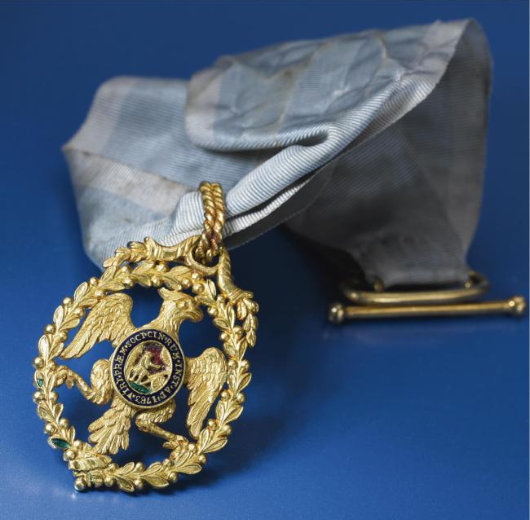
George Washington’s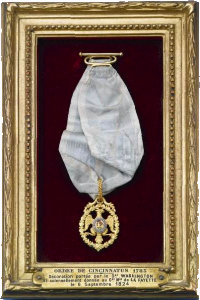 Society of the Cincinnati medal was auctioned off at Sotheby’s last year for a whopping $5,305,000. Founded by General Washington and other officers of the Continental and French armies who served in the American Revolution, the Society of the Cincinnati is the oldest and most prestigious of America’s many hereditary societies.
Society of the Cincinnati medal was auctioned off at Sotheby’s last year for a whopping $5,305,000. Founded by General Washington and other officers of the Continental and French armies who served in the American Revolution, the Society of the Cincinnati is the oldest and most prestigious of America’s many hereditary societies.
Louis XVI was himself a member, and the Society was known as the ordre de Cincinnatus in France, where it was added to the hierarchy of orders (even though it was not, strictly speaking, an order) as ranking just below the Order of Saint Louis.
General Washington’s Cincinnati badge was, after his death, given to the Marquis de Lafayette whose descendants kept it in the family until the auction last December.
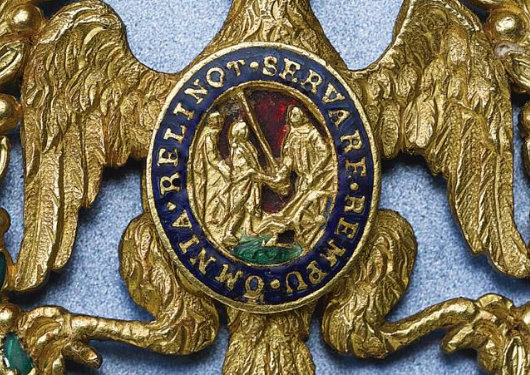
The design of the Society’s eagle is by Pierre Charles L’Enfant, the master planner of Washington, D.C., and this particular medal is believed to have been crafted out of gold and enamel by Duval and Francastel of Paris sometime between December 1783 and April 1784.
The motto ringing the oval medallion on the eagle’s chest reads OMNIA • RELINQT • SERVARE • REMPU — an abbreviation of Omnia Reliquit Servare Republicam, “He left everything to serve the republic”, referring to Cincinnatus himself, whom the members of the Society considered worthy of emulation.
In the center of the oval, two Roman senators present a sword to Cincinnatus, who stands by his plow.
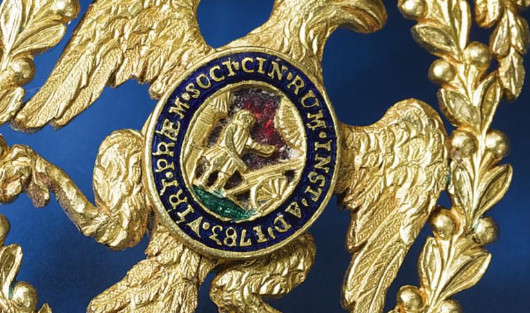
The text on the reverse side of the badge reads VIRT • PRÆM • SOCI • CIN • RUM • INST • AD • 1783 — an abbreviation of Virtutis Præmium Societas Cincinnatorum Instituta Anno Domini 1783, “Reward of Valor of the Society of the Cincinnati, Founded in the Year of Our Lord 1783”. On this side, the central image depicts Cincinnatus beside his plow and his home with the sun rising in the sky.
The medal was presented to General Washington and held to his death, when it was inherited by his wife Martha. On Martha Custis Washington’s death in 1802, it was inherited by President Washington’s adopted daughter Eleanor Parke Custis Lewis. When the Marquis de Lafayette made his famous return visit to America in 1824, Nellie Lewis presented him the medal as a gift. It then remained in the Marquis’s family until his great-great-great-grandson put it up for auction last year.
Old badges of the Society are much sought after by special collectors, and a number are held by museums and other institutions. The United States Military Academy at West Point has in its collection a Cincinatti badge (picture below) made in Philadelphia c. 1815–1820 by the famed silversmiths Thomas Fletcher and Sidney Gardiner.
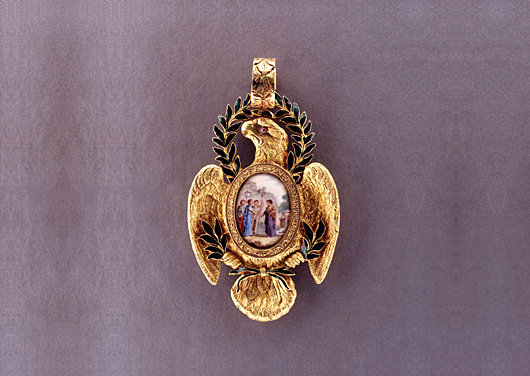
Search
Instagram: @andcusack
Click here for my Instagram photos.Most Recent Posts
- Sag Harbor Cinema March 26, 2025
- Teutonic Takeover March 10, 2025
- Katalin Bánffy-Jelen, R.I.P. March 3, 2025
- Substack Cusackiensis March 3, 2025
- In the Courts of the Lord February 13, 2025
Most Recent Comments
Book Wishlist
Monthly Archives
Categories



The Duc d’Anjou (Louis XX) was invited to the papal mass at the Chapel in Les Invalides and the only decoration he wore was (what looked to me like) the smaller medal of the Society of the Cincinnati on his lapel. No idea why he chose that one!
It has to be “Omnia Reliquit Servare Rem Publicam.” In Classical Latin the English “republic” generally is two words, “res publica;” REMPU would be an abbreviation of “rem publicam” and not “republicam.”
Mr. Cusack, I am a member of the Society, do you know who purchased the medal? When in D.C. visit Anderson House, the Cincinnati HQ, there is a nice museum there as well. Members can stay there as each State Society (there is also a French Society) has a suite of rooms. I stay there when in D.C. It is very nice and well preserved. Worth a visit.
I am always amused by the propensity of scholars (and particularly scholars who are not Americans) to compare the Society of the Cincinnati unfavorably with European orders of chivalry. The badge or “eagle” of the Cincinnati is of course accorded special precedence not only among “America’s many hereditary societies” (which is itself a misnomer since the “many hereditary societies” that phrase here intends are not hereditary societies at all, but more properly lineage societies) but also by the U.S. military. Its original French name Ordre des Cincinnatus and the favor it received there (under a monarchical tradition contemporary to the Society of the Cincinnati and the United States of America’s foundings) tell a different story with regard to it being “not, strictly speaking, an order.” If the contemporary French crown considered it an order, surely that was the proper determination and not a centuries-later comparison. Rather, it was and is very much an order, but a hereditary order –the only true hereditary order– of the United States, a New-World, republican, sovereign nation, and the class of military officers who ensured its sovereignty instituted it themselves in such a way that speaks to the very nature of the United States versus the monarchies of the eighteenth century. Are its members a nobility? No; the United States is *rightly* without nobiliary or chivalric authorities based on its own republican tradition; but it is certainly *the* hereditary order of the United States of America and its membership and lineages are the equal in character within the traditions of their respective nations of any national or chivalric hereditary order.
The Latin text of the reverse side and translation don’t quite work. Virt Praem Soci Cin rum Inst cannot mean ‘Reward of Valor of the Society of the Cincinnati,’ though it is certainly an accurate paraphrase. As given, societas is nominative and would agree with insituta. Though that Latin is fine, the trouble is that the translation does not reflect it and reads genitive, societatis . . . institutae. The abbreviations in the Latin text on both sides are pretty quirky. The Metropolitan Museum of Art offers help:
https://www.metmuseum.org/art/collection/search/298
As such, I would suggest ‘Reward of valor. Society of the Cincinnati’, a minor quibble, I realize. Nice post, by the way.
My sister has in her possession a medal that reads Societas Cincinnatorum Instituta AD1783
It is contained in a sealed frame. Can you tell me anything about this medal? Who would have received such a medal? I have a 4th great grandfather that was assigned to General George Washington’s life guard unit, could that have been awarded to the members of his company? his name was John George Burkhardt.